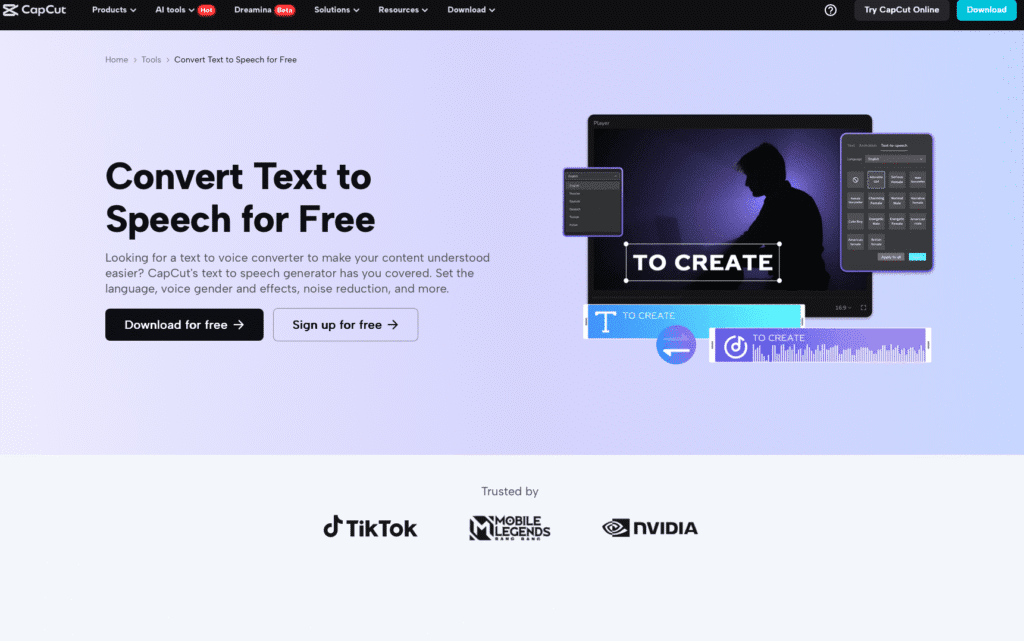Voiceovers are an essential part of various industries such as film, advertising, e-learning, and gaming. They bring a new level of engagement and emotion to content, making it more relatable for audiences.
Traditionally, voiceovers were done by human artists, who would record their voices for specific projects. However, with the advancements in technology, artificial intelligence (AI) has entered the picture, changing how voiceovers are produced. Now, we can create lifelike voices using AI, making it more accessible, affordable, and efficient. AI tools like text to speech AI are transforming how we interact with and consume content.
The Evolution of Voiceovers: From Human Talent to AI
In the past, voiceover work required skilled professionals with specific voices for various projects. Whether it was a character in a cartoon or a narrator for a documentary, talented voice artists brought words to life. This process involved recording sessions, editing, and often multiple retakes to get the perfect result.
But with the introduction of text to speech AI, things have changed drastically. This AI technology enables computers to read out written text in a natural-sounding voice. It can produce voiceovers almost instantly, without the need for any human involvement. AI has opened up new possibilities for content creators. They can now use text to speech AI to generate voices that sound remarkably like real humans, without hiring voiceover artists. This technology is a game-changer, especially for those who need voiceovers for short-form content or who are working on a budget.
AI Voice Generators: A Revolution in Voiceover Production
An AI voice generator is a tool that uses artificial intelligence to convert written text into spoken words. These tools use machine learning models that have been trained on large datasets of human speech, allowing them to create voices that are incredibly lifelike and versatile. The best part about AI voice generators is their ability to mimic different accents, tones, and emotions, making them suitable for various contexts.
For example, an AI voice generator can produce a voice that is warm and friendly for a commercial, or a serious and authoritative voice for a documentary. It gives content creators the flexibility to choose voices that best match their content, all within a matter of seconds. AI voice generation is also beneficial for creators who need to produce content in multiple languages. With a simple click, they can generate voiceovers in different languages without the need for separate recordings. This has made AI voice generators a popular choice among YouTubers, e-learning platforms, and game developers.
One such AI tool that is gaining popularity in the content creation world is the AI video upscaler. These tools use AI to enhance the quality of video content, making it sharper, clearer, and more detailed. When paired with an AI-generated voiceover, the combination results in highly professional and polished content. AI video upscalers have made it easier for creators to turn low-resolution videos into high-definition content, which is a huge advantage for those who might not have access to expensive cameras or equipment.
The AI video upscaling process works by analyzing the video and using deep learning to improve the visual quality. It can enhance the resolution, colors, and textures of the video. This means that even older or lower-quality videos can be transformed into visually appealing content. Whether you’re working with home videos or older footage, AI video upscalers can help improve the overall quality of your videos, ensuring that they match the level of professionalism expected today.
How to Use CapCut’s AI Voice Generator: A Simple Guide
Capcut is a popular video editing tool that offers several features for creating high-quality content, including an AI voice generator. With Capcut, you can easily add AI-generated voiceovers to your videos. Here’s a simple guide to using Capcut’s AI voice generator in three easy steps:
Step 1: Import Video
To get started, you first need to import your video into Capcut’s desktop version. This is as simple as dragging and dropping the video file into the Capcut editor. Once the video is uploaded, you can begin editing and preparing it for the AI voiceover.
Step 2: Use Text to Speech AI
Next, go to the “Text” tab and input your script or the text you want the AI to read aloud. Then, select the “Text to speech” option and choose your desired tone and voice. The CapCut desktop video editor will then generate a voiceover for you.
Step 3: Export Video
Once you’re satisfied with the AI-generated voiceover, you can export your video. Simply click on the “Export” button, and CapCut will create a final video with your AI voiceover included. It’s that simple!
Using CapCut’s text to speech AI feature, you can create professional-quality voiceovers without the need for expensive equipment or hiring voiceover artists. This makes it ideal for content creators who need to produce voiceovers quickly and efficiently.
Conclusion
In conclusion, AI is revolutionizing the voiceover industry in ways we never imagined possible. Tools like text to speech AI, AI voice generator, and AI video upscaler are making it easier for creators to produce high-quality, lifelike voiceovers and videos.
With platforms like CapCut, anyone can add professional voiceovers to their videos without needing special expertise or expensive equipment. The future of voiceovers is limitless, and as AI technology continues to improve, we can expect even more exciting advancements that will change the way we create and consume content.


